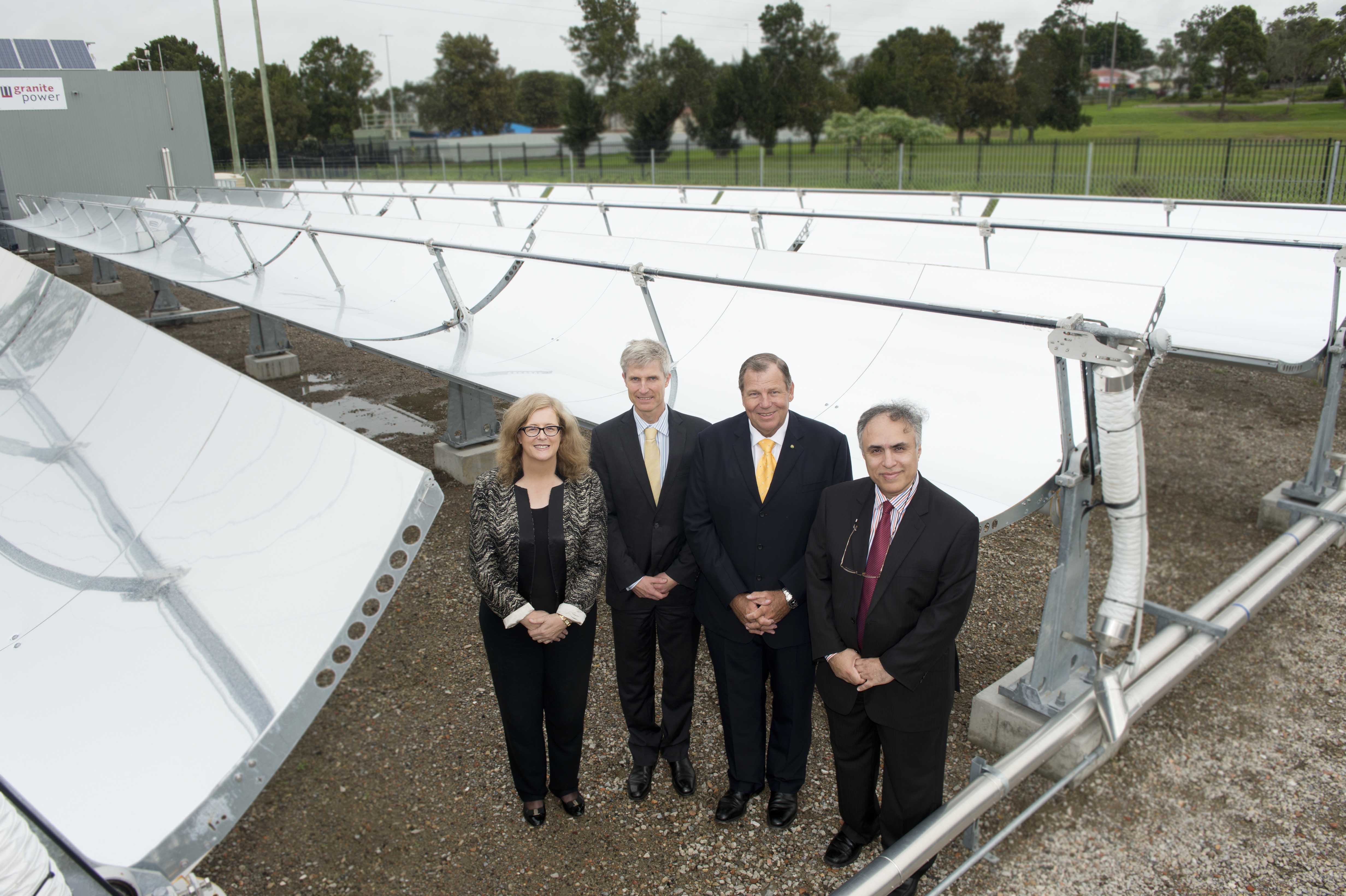It’s no Ivanpah or Crescent Dunes, but the launch last week of a $1.7 million, small-scale concentrating solar thermal demonstration plant at Newcastle’s Wallsend Pool nonetheless constituted an important moment for Australian solar thermal technology.
Unlike the two aforementioned gigantic concentrating solar thermal plants in California and Nevada, the Novacastrian plant will generate only 30kW of electricity and 150kW of heat for the public swimming pool – enough to keep it heated, and thus open, all year round.
But like its large-scale counterparts, the ARENA-funded project will demonstrate solar thermal’s game-changing ability to provide 24/7 electricity – in this case, via first-of-its-kind technology developed by the University of Newcastle and the Newcastle Institute for Energy and Resources, which combines integrated solar thermal storage with a gas heat engine.
And, perhaps most importantly, it will be the technology’s test-bed and launch platform, generating thousands of hours of research data to better understand the commercial potential for small-scale solar thermal systems as cost-effective, renewable energy options in remote and off-grid locations.
The plant, itself, combines a 200 kilowatt field of curved parabolic trough solar collectors which collect heat from the sun and produce electricity and heat for on-site use using heat engine technology designed in Australia by Granite Power.
Developed in conjunction the University of Newcastle and its commercialisation arm Newcastle Innovation, Granite’s GRANEX heat engine has the ability to generate electricity from a wide range of low and medium grade heat sources. Used in conjunction with the solar thermal field, it increases the solar thermal efficiency, generating more power.
University of Newcastle Research Professor Behdad Moghtaderi says the technology means electricity and heat can be produced with zero carbon emissions from a range of different sources.
“Any type of low-grade heat source and also renewable energy sources, in the example that you have for a swimming pool today, essentially we are using solar energy as heat input,” he said. “But … you can use geothermal energy, biomass energy or waste heat going out of the stack of power plants and things like that.”
But while the Newcastle demonstration plant is on the grid, the most promising applications for small-scale solar systems like this one, says Moghtaderi, is in off-grid areas, such as remote communities and industrial and mining sites, where costly diesel fuel is the only available alternative.
“We’re excited about the potential use of this system to reduce the energy costs of Australian remote and regional areas,” said Ivor Frischknecht, CEO of the Australian Renewable Energy Agency (ARENA), which contributed $812,000 towards the GRANEX project’s development.
“Any renewable energy system that can help decrease the sole dependence on diesel would be invaluable in remote communities but also help reduce the cost on mine sites throughout regional Australia,” Frischknecht said in a speech at the Newcastle project’s launch.
ARENA, which in January agreed to co-fund a feasibility study into replacing existing South Australian coal-fired generators with solar thermal, has been a vocal supporter of boosting Australia’s concentrating solar power repertoire, as has the Clean Energy Finance Corporation.
Beyond its promise in remote and off-grid applications, the case has been made that CSP systems with energy storage can be sufficiently reliable that if installed at constrained locations in the network, they can avoid the need for expensive network upgrades.
A recent study by the AUSTELA-Institute for Sustainable Futures examined this hypothesis at constrained sites across the NEM, and identified $0.8 billion of potentially avoidable network investment, and 533MW of cost effective CSP, which could be installed at grid constrained locations in the next 10 years.
Currently, however, the technology is cost prohibitive, and needs all the funding help it can get: estimates put CSP at around 50 per cent more expensive on Levelised Cost of Energy than solar PV, although industry insiders have argued that while solar thermal energy may cost 50 per cent more, the total economic value delivered may be up to 150 per cent greater.
Meanwhile, it has been predicted by the likes of the CSIRO that cost of dispatchable solar thermal energy (with storage) will halve by the end of the decade, falling to just 12c/kWh by 2020.
“ARENA recognises the importance of supporting renewable energy projects that are innovative, economically geared and increasingly market-driven – such as those that could deliver low cost power to remote mining communities,” said Frischknecht at the Newcastle project launch last week.
“It is vital that Australia continues to deliver world-leading and cost-effective renewable technology solutions that keep up with economic growth.”








